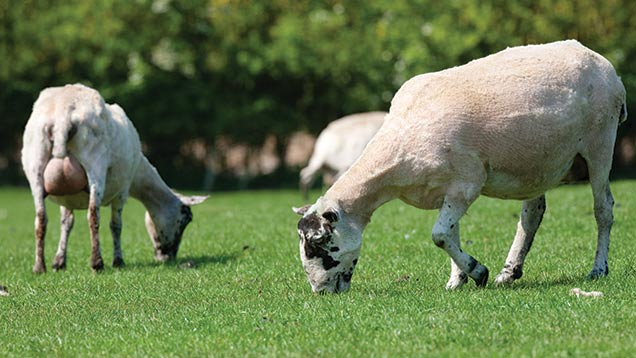Farmers urged to test for toxoplasmosis to curb lamb losses
 © Tim Scrivener
© Tim Scrivener As lambing comes to an end sheep farmers are being urged to check ewes for causes of lambing losses and act now to minimise abortion and barren ewes next season.
The advice comes after recent barren ewe checks by The Livestock Partnership revealed more than 50% were caused by the organism toxoplasma gondii.
See also: Farmer sickened by gruesome sheep attack
Vet and director Maarten Boers says while many farmers vaccinate routinely for enzootic abortion – another cause of lower lambing percentages – toxoplasmosis can be overlooked.
“Farmers are definitely vaccinating more for enzootic abortion as you can buy in carriers. Toxoplasmosis, on the other hand, is not routinely vaccinated for and it’s prevalence in a flock is down to the environment, particularly the presence of young cats and vermin.”
Cats become infected after eating infected birds or rodents. After this they shed highly infectious cysts in their faeces which, if deposited in barns, feed or forage, are a major source of infection, explains Mr Boers.
The average infected cat dropping can have 50m eggs and it only takes 200 to infect one ewe.
Ms Hovers’ top tips for preventing toxoplasmosis
- Vaccinate sheep at least three weeks before tupping
- Cover concentrate feed
- Maintain good pest control
- Keep cats away from forage and housing, especially during ewe pregnancy
- Neuter cats and keep them healthy – any cats who have eaten infected vermin will excrete eggs when under stress, including during pregnancy or when young
- No treatment is available for cats
“Just one infected dropping can infect more than 100 ewes and the eggs can survive on the farm for over a year, so even after the dropping has dried up or weathered away, the risk of infection is still high.”
Diagnosis
Apart from the high risk of ewe exposure to eggs, Mr Boers believes the increase in cases seen is due to increased testing for the disease as subsidised tests are offered by animal health company MSD.
“It’s like anything, if you spend more time looking for something you’re more likely to find it. It’s a good tool to make sure there’s nothing nasty going on and is definitely something I’m going to push from now on.”
Vet and sheep technical advisor for MSD Kate Hovers says farmers should speak with their vets on how the tests can best be used as each farm is different and sheep need to be tested within a certain time frame.
“When a ewe gets an infective dose of toxoplasmosis she will reabsorb, abort or have a weak lamb. Natural infection causes a rush of antibodies and it takes three weeks for the ewe to develop immunity.
“Farmers who have undiagnosed abortions or a higher barren rate need to test now before the ewes’ antibodies wane. Testing is worth doing as soon as possible after lambing, definitely within two to three months,” she adds.
MSD subsidises the lab costs for six to eight ewes to be blood tested for toxoplasmosis and enzootic abortion if they are not vaccinated against these.
Toxoplasmosis is more tricky to diagnose as it can present in different ways, explains Mr Boers: “One farm may have abortion storms, another may have high barren rates, but any farmer who has niggling losses in the background should consider testing for toxoplasmosis as a potential cause.”
The results will aid in quantifying how many losses were caused by the disease and what steps need to be taken to minimise losses the following year.
Depending on the farm situation, the samples can be flock-wide or specific groups within a flock can be tested individually, says Mr Boers.
Action
If the results show a ewe has tested positive for toxoplasmosis, ewes can be vaccinated once lambing has finished, at least three weeks before tupping to protect them ahead of the next season.
The disease is not usually transmitted between sheep, so if older ewes have been previously vaccinated or infected and developed natural immunity, it may be possible to only vaccinate the younger half of the flock, or replacements as they join. However, Ms Hovers advises farmers to discuss the most suitable treatment plan with their vet.
